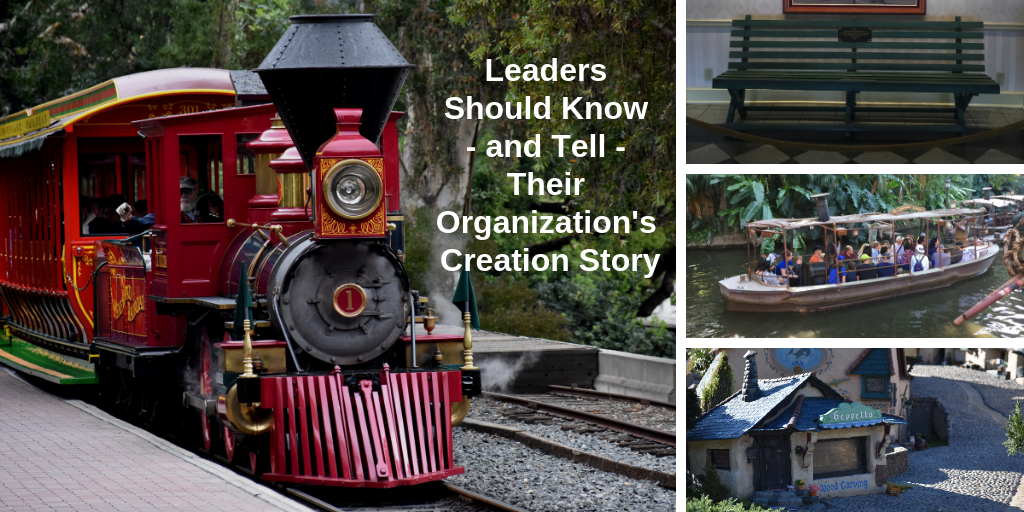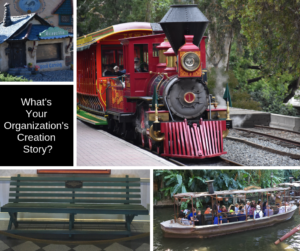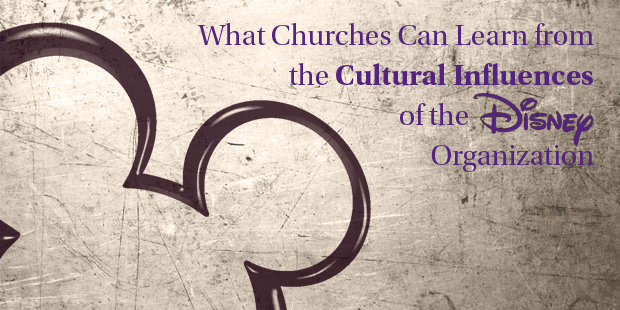
Leaders Should Know – and Tell – Their Organization’s Creation Story
Will Mancini, founder of Auxano and Younique, writes about the importance of leadership stories here. He believes that storytelling and understanding the nuances of story will help leaders in the daily ebb and flow of communication. The first, appropriately, is your organization’s creation story.
As a leader, you should know more about the creation story of your organization than anyone on the planet. What are the circumstances—passions, problems, and people—surrounding how the organization got started to begin with?
Mastering the richness of the creation story will help in two major ways. First, it will hold insight into the unique culture of the organization and therefore future decision-making and vision. Second, your mastery of the story itself will bring tremendous credibility with people when initiating change.
With a passion of Disney history, I’m always grateful to visit Disney properties and immerse myself in the stories and culture of Walt Disney and the “kingdom” he began. During a recent multi-day visit to California, I had the opportunity to visit Disneyland several days, experiencing both the familiar and new perspectives.
Take this image, for example:

In talking with current Cast Members, Tour Guides, and former Imagineers, various stories were given as to the origin of Disneyland:
- It was Walt Disney’s fascination with trains, beginning as a boy, that led him to first create a scale model railroad in his backyard. Not satisfied, he begin to develop an ever-growing park that would include a railroad. When Disneyland opened in 1955, the first object you saw approaching the park was a train station, and a 5/8 scale railroad encircled the park.
- Saturday’s were “Daddy’s Day,” and Walt often took his daughters to play in nearby parks. While sitting on a bench in Griffith Park, Walt imagined what a park would look like that would allow both parents and children to be immersed in a story-rich, safe, clean park.
- Fascinated by miniatures, Walt began a hobby of crafting extremely detailed miniature items, building entire rooms filled with objects that were not only beautiful to look at, but fully functional. He envisioned a place to display these miniatures so that people from all over the country could enjoy them.
- By the late 1940’s-early 1950’s, Walt had grown tired of making animated pictures, and even his recent venture into live-action motion pictures left him dissatisfied. He imagined a place were people could actually be a part of a story, immersed in all the rich details that a “theme park” could provide.
What is the true origin of Disneyland?
I believe that all of the above contributed to the creation of Disneyland. And the common denominator of all of them?
Passion.
> What about your organization?
ACTION STEP: Write a one-page, 2-minute creation story talk. If you have any gaps in your knowledge, interview people in your organization until you know more than anyone else.

Tags: Bob Adams, Disneyland, Origin Story, Stories, Walt Disney, Will Mancini














